Bring on the Boost! BoostLine Rods for Subaru EJ20 and EJ25 Engines
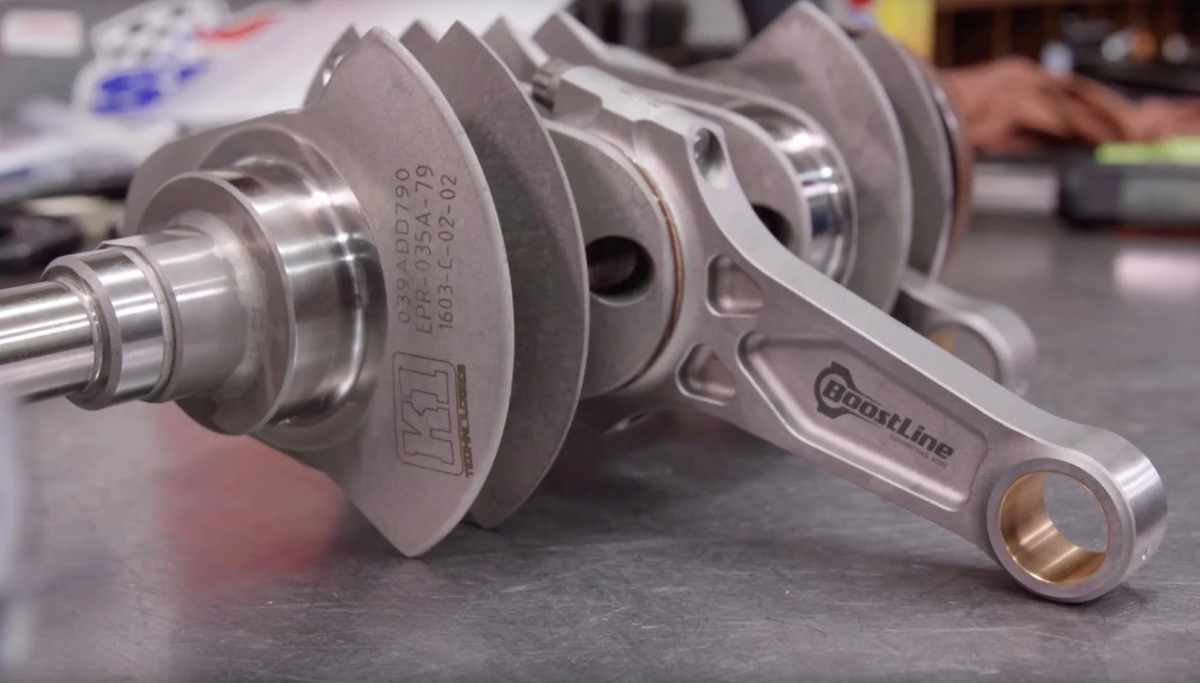
BoostLine rods for Subaru EJ20 and EJ25 engines takes the power and boost potential of an already potent platform to the next level!
BoostLine connecting rods for highly boosted Subaru EJ20 and EJ25 engines were launched a little over three years ago. These unique, lightweight rods can handle upwards of 1,000-horsepower in 4-cylinder applications and are a substantially more durable alternative to aluminum drag racing rods.
Subaru EJ20/EJ25
Note: Block clearancing required above 81mm stroke
“We wanted to develop a rod that was capable of handling the power that a new generation of builders are extracting from their engines with better tuning and fuel, and longer-lasting components,” says Nickolaus DiBlasi, BoostLine’s Director of Product Management. “BoostLine rods are for the majority of people who want to drive their cars on the street and can’t get away with the short life of an aluminum rod. We created a durable, high-performance steel rod that’s different from what everyone else has out there.”
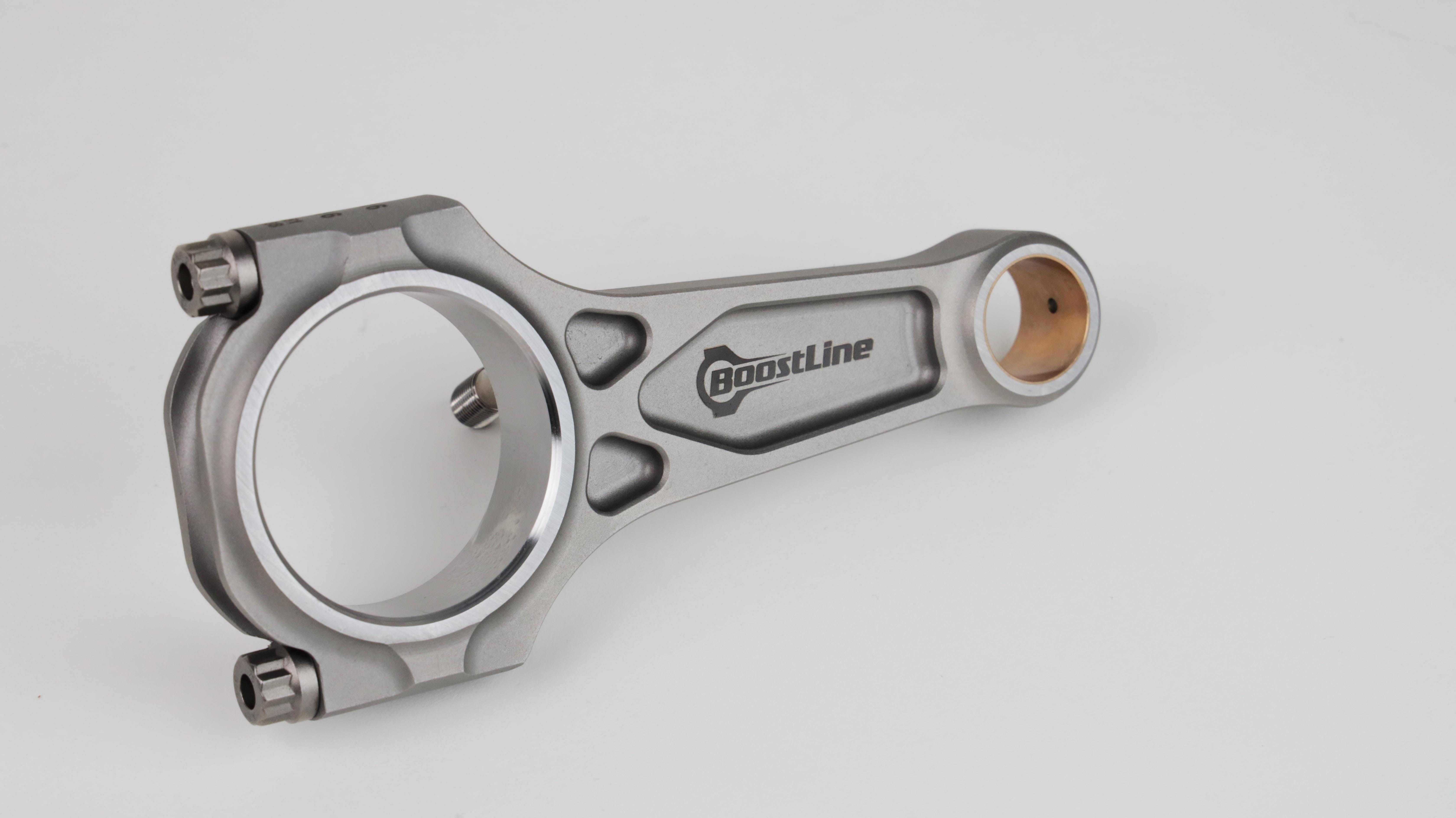
BoostLine’s 4340 chromoly steel rods feature a patented, F1-inspired three-pocket design. Three large voids are milled out of the rod to create a distinctive look that reduces weight and creates a strong, truss-like system to resist bending.
“We haven’t failed one yet,” adds DiBlasi, “and they should be good for many rebuilds. We want this to be the last new rod you have to buy before you go to an aluminum rod and become a full-blown drag racing car.”
The EJ block from DiBlasi’s own Subaru project was used in the development of the first BoostLine rods. To create a perfect fit, BoostLine always begins with a 3D laser-scan of the block. The crankshaft and different stroke iterations are superimposed onto the digital block model to build a design based on a wide envelope. For the relatively big-bore EJ for example, the short standard stroke is 75mm, but with a BoostLine rod, block clearancing is only required for strokes above 81mm.
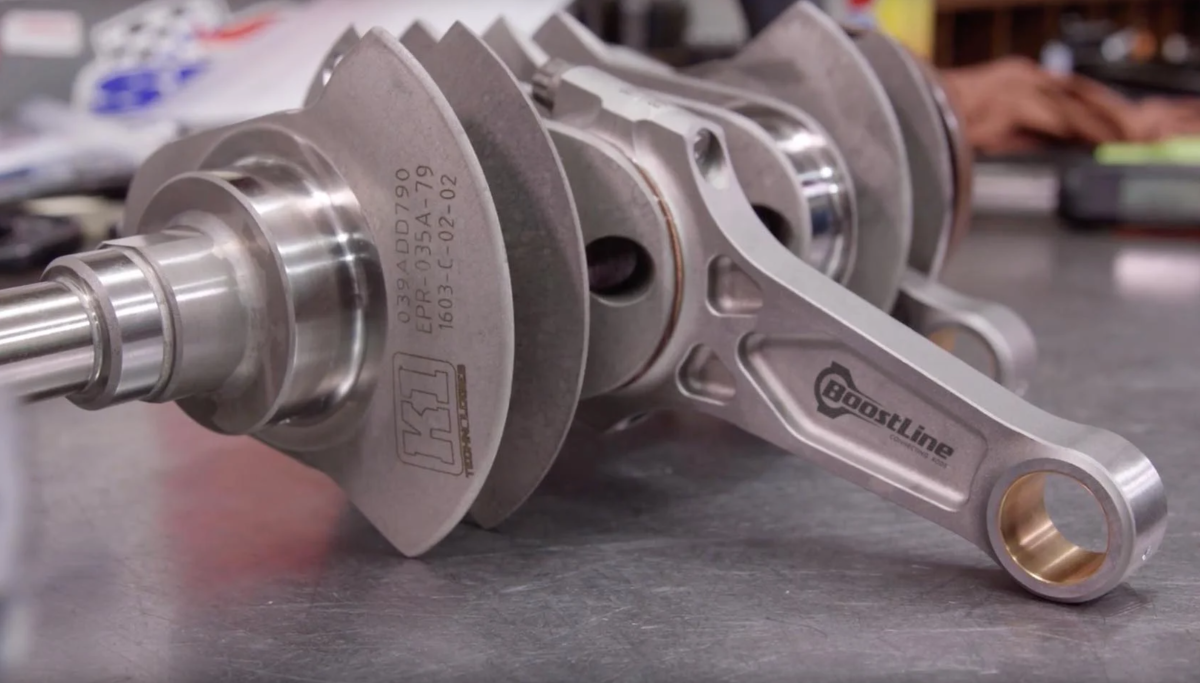
“The Subaru is a very difficult application,” notes DiBlasi. “There’s not much room to make a robust design. You have fairly large crankshaft availability – the blocks are designed for a 75mm stroke, but people go up to 83mm, so the amount of stroke change for which you have to compensate is very large considering it is a very short block relative to almost every other. With the Subaru rods we had to hyper-focus on the design, knowing what people do and when, what kinds of fuel they use, how much boost the motor is going to run and how much load the rod is going to see.”
The test program always starts with 3D-printed rods and physical test fits with actual pistons, cranks and blocks. Finite Element Analysis (FEA) provides a reliable indication of whether the rod can handle the loads and required bending strength increases that come from extreme engine power. Finally, the finished parts are cycled and abuse-tested on the dynos at BoostLine’s in-house test center.
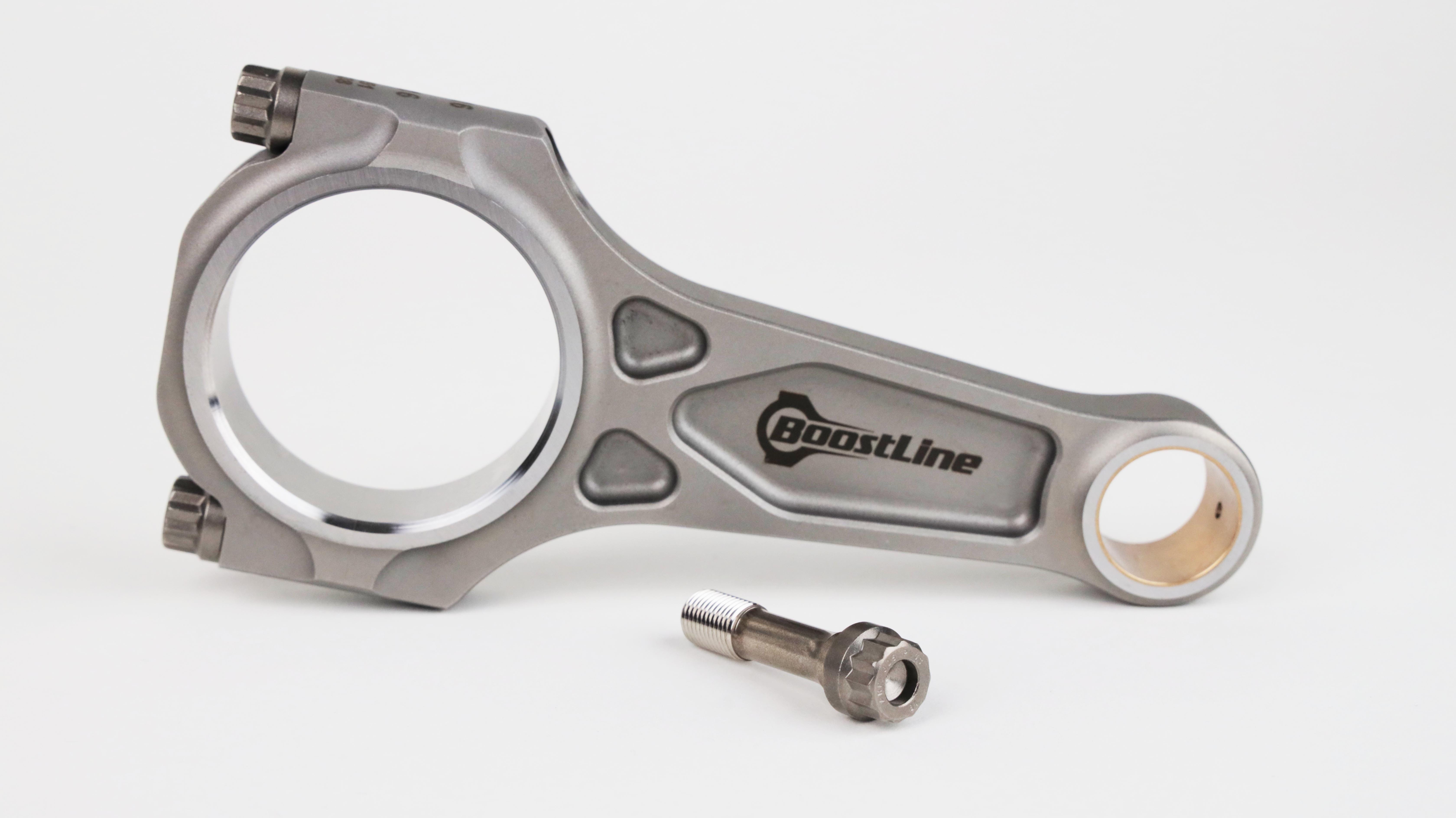
“It’s about having input, direction, and being able to watch every step of the way from the raw material to the end product,” says DiBlasi. “That’s why we do a 25-point inspection on something that probably only needs five points of inspection. We want what we’re doing to be the best.”
Part of the way in which BoostLine achieves that objective is by incorporating a shot peening process to stress-relieve the surface.
“A lot of rods are sandblasted for a nice finish, but our shot peening process enables us to remove any stress risers on the machined surface that might lead to crack propagation. As part of that it’s really important to specify every detail – the size of the beads, the pressure, how it’s applied, the angle and how long the process lasts. It’s the same with heat treatment. Different materials and different thicknesses need to be heat treated in a different order of operations. I believe we do things differently to most companies because we have full control of the manufacturing processes and have designed and tested around them.”
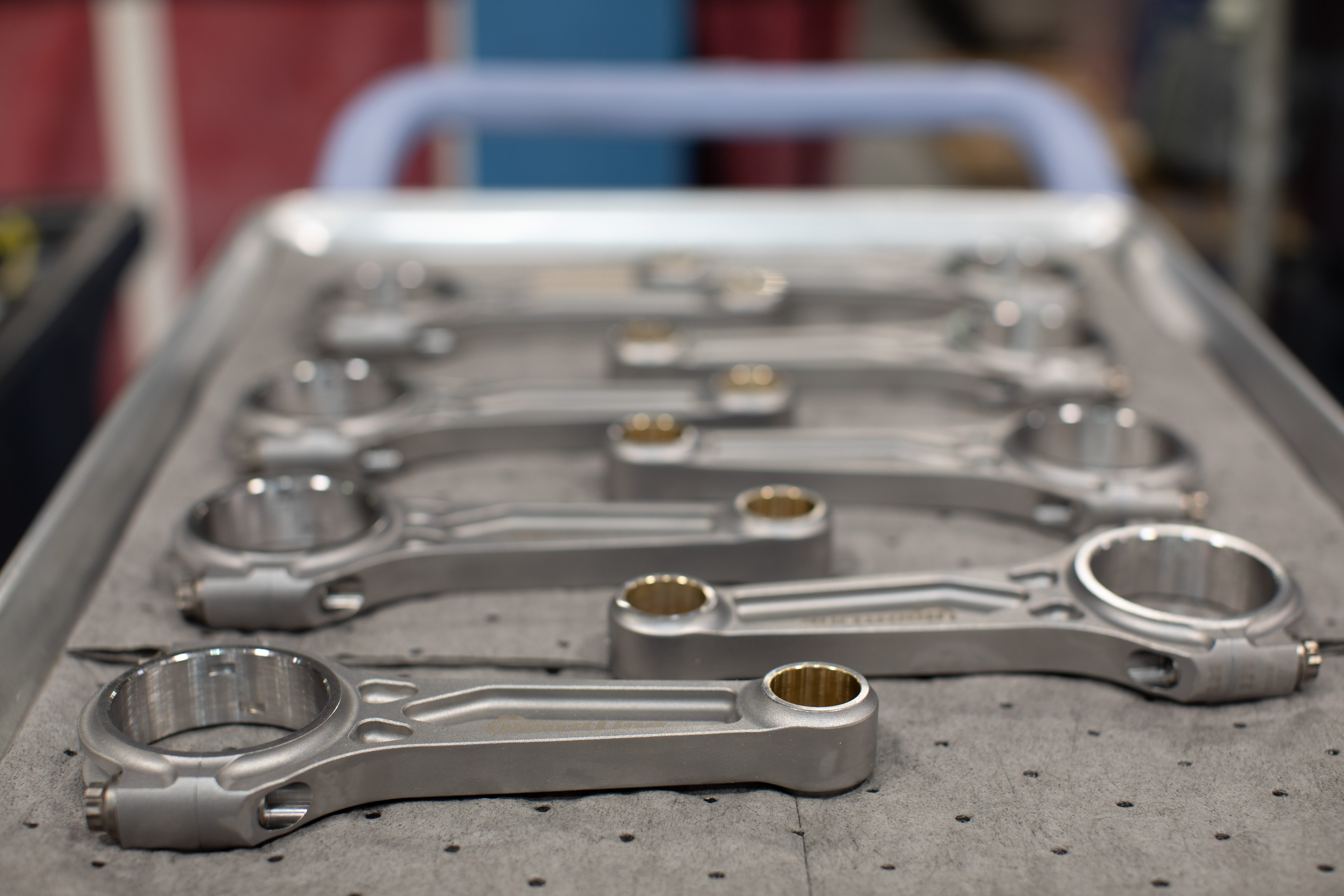
Learn more about BoostLine’s design process here!
ARP 2000 bolts are supplied with all BoostLine rods, while an available 625 Plus upgrade provides 27% more tensile strength.
Check out more tech info from BoostLine here, and see all the latest in the world of power-adder con rods here!